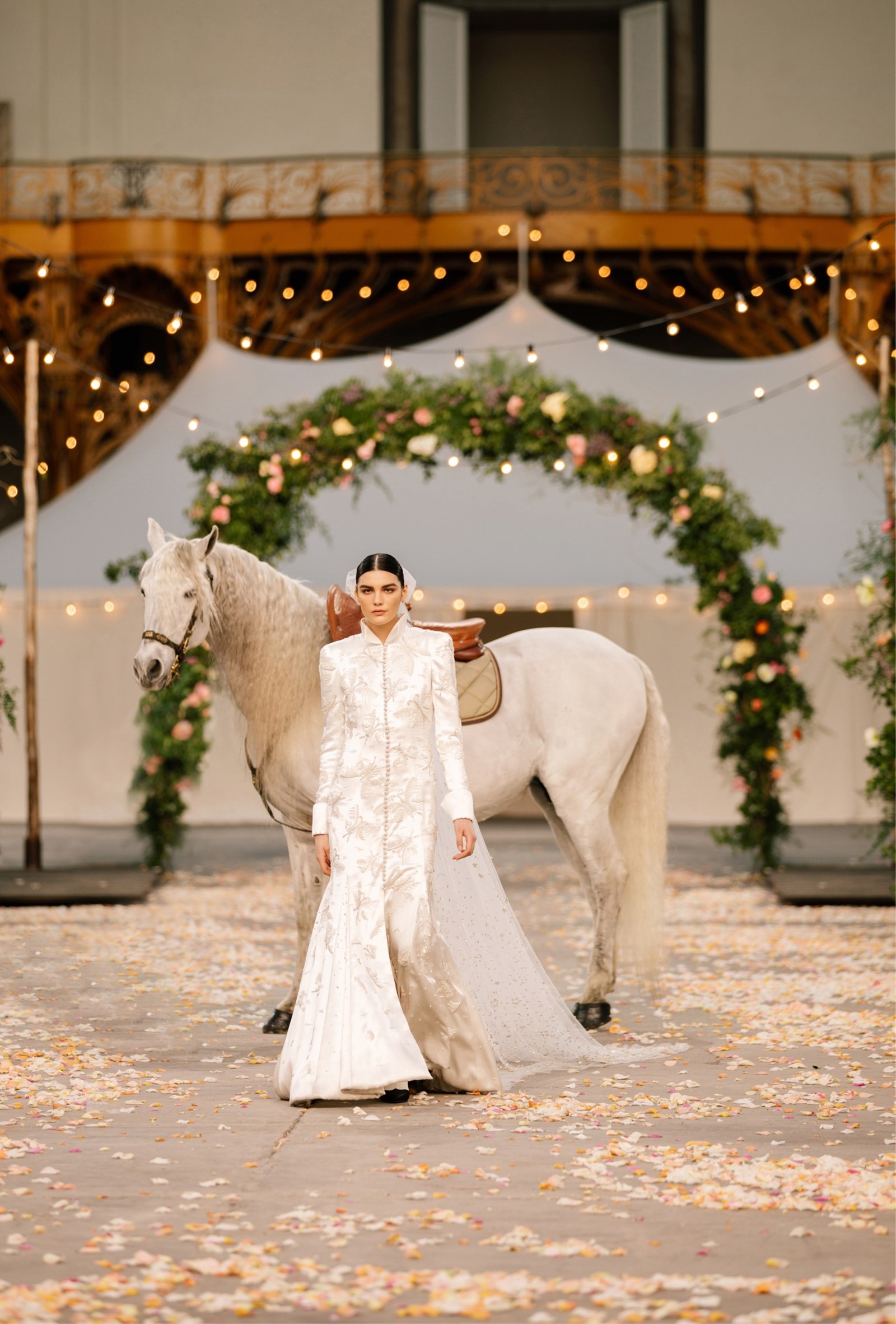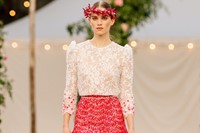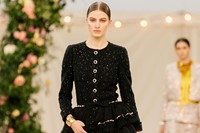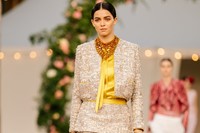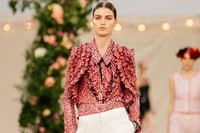The finale of an haute couture show is, traditionally, la mariée – the bride. The wedding gown being, convention says, the sublimation of everything a couturier (or indeed couturière) wishes to say about their woman for the season. Yves Saint Laurent neatly inverted that with his ‘Joke’ brides, ones dressed as scarlet ladies in an inferno of red silk faille (Autumn/Winter 1992), as a Russian doll of ivory cable-knit (Autumn/Winter 1965), or in 1970 in a patchwork coat-dress declaring “Love me forever” (in front), “or never” (in back). There was no joking, however, at the latest Chanel show, where Virginie Viard opted to imagine her entire collection as a bridal cortège, parading through the nave of the Grand Palais garlanded like a French village wedding scene.
There’s a poignancy to that: it reminded you that the world as a whole is interrupted. Physical couture shows have been cancelled due to Covid-19 lockdowns, of course – including the two, 300-people shows Chanel planned to stage until newly-imposed restrictions made that impossible. But so have rituals of life: weddings, christenings, gatherings of celebration. So Viard staged her own, under bowers of flowers, with models dressed like the attendees of eminently chic nuptials. “I knew we couldn’t organise a big show, that we would have to invent something else,” Viard commented. “So I came up with the idea of a small cortege that would come down the stairs of the Grand Palais and pass beneath arches of flowers. Like a family celebration.”
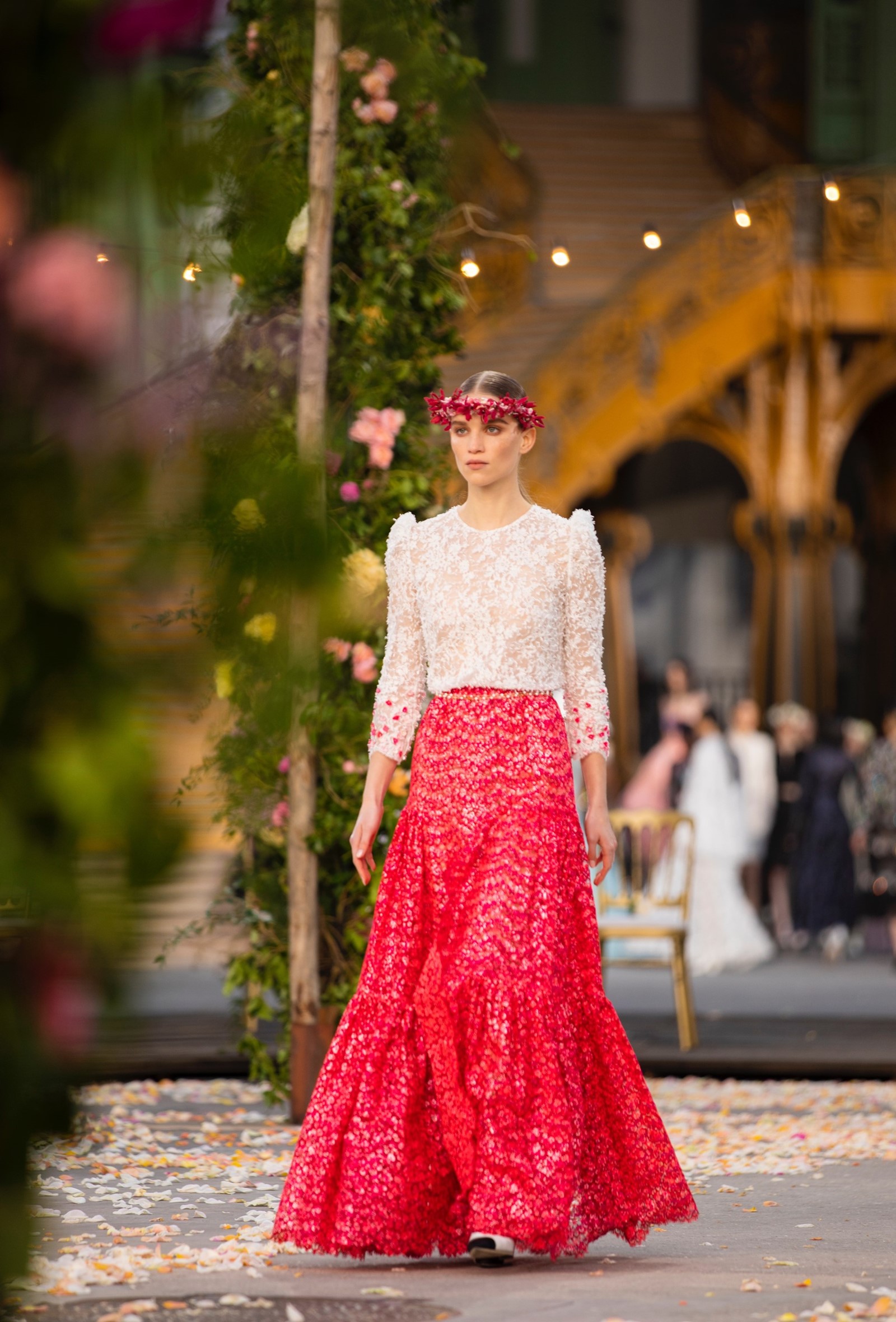
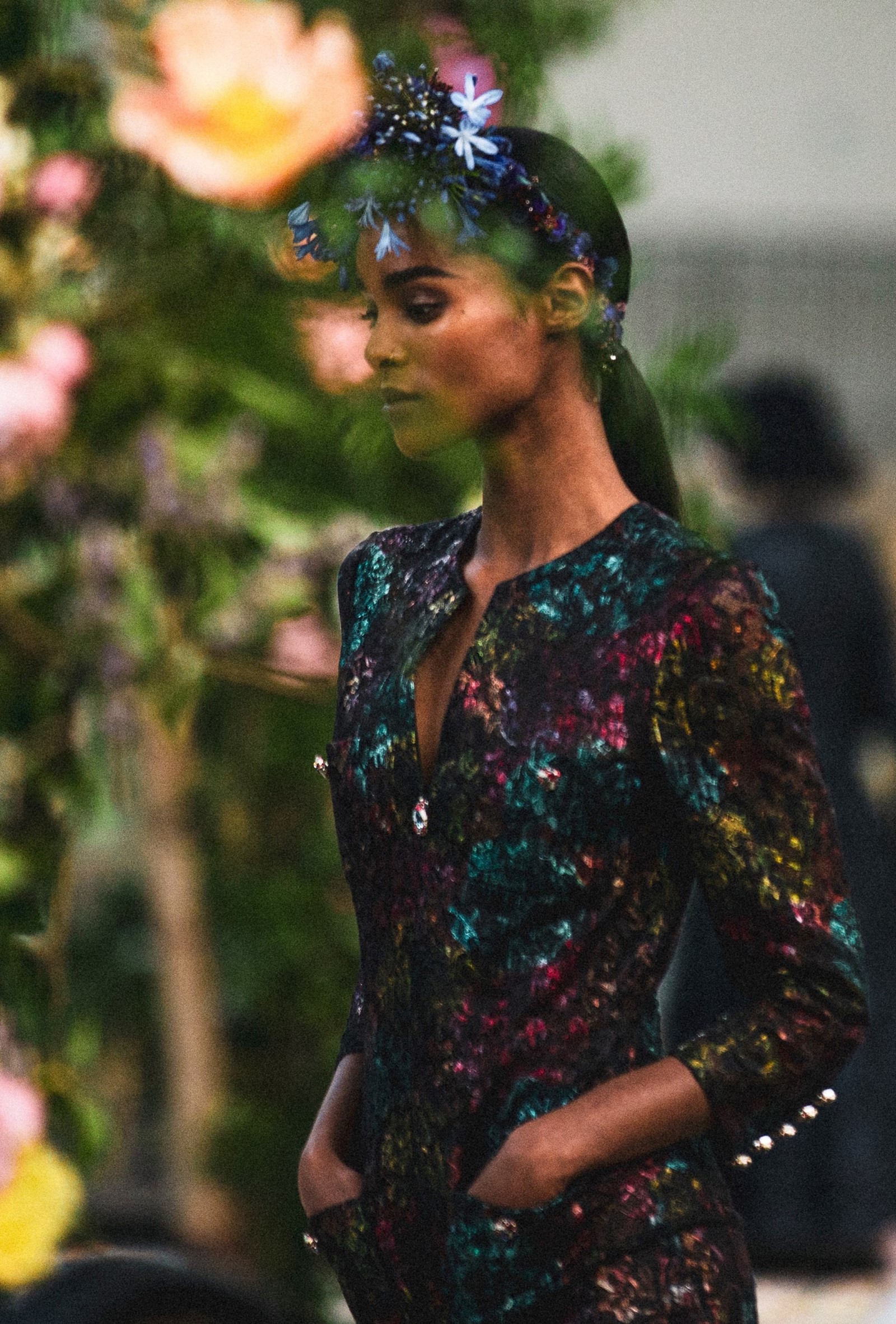
Despite the circlets of flowers in the models’ hair – this was a spring couture collection after all – the country setting, admittedly, was kind of moot. These women looked Parisian, through and through, dressed in eminently chic attire – silvered tweed suits, billowing tulle skirts, tiered and ruffled dresses like Chanel’s dégagé Spanish-inspired dance dresses from the 1930s. That was couture, again, created in extraordinary circumstances – back then, of the Great Depression. Despite the adverse environment, couture carried on – as it does today.
If we speak of marriage, the one between Chanel and the ateliers it has dubbed ‘Paraffection’ – the name derived from the French translation of ‘for love’ – is a match made in heaven. Here, there were embroideries by the expert ateliers of Lesage, macramé executed by Montex, intricate and extraordinary feather embellishments by Lemarié, jewelled buttons by Desrues. They were perfectly matched by the skills of the Chanel ateliers – which Viard also celebrated here, through their exceptional, unique work. “Chanel is also like a family,” she commented.
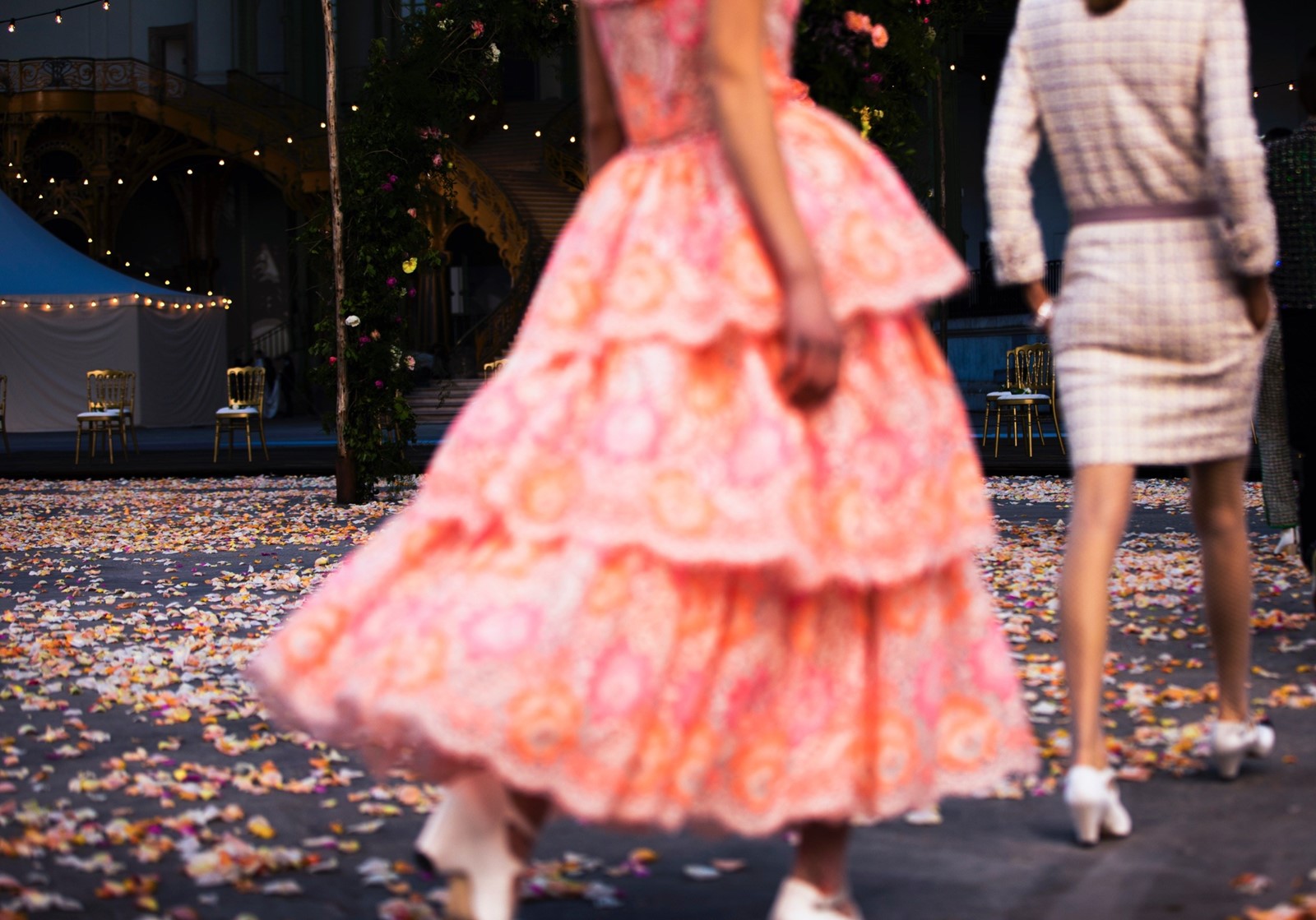
Amplifying that family atmosphere, on the catwalk the ages of every model varied, as if mothers and daughters were captured in attendance. “I love big family reunions, when the generations all come together,” Viard herself said. “It’s so warm.” Black, of course, wasn’t bad luck at this wedding – this was Chanel, after all. It dressed the most high-profile guests, positioned on pretty gilt salon chairs that, suddenly, seemed recontextualised for an outdoor wedding. They were Penelope Cruz, Marion Cotillard, Vanessa Paradis and her daughter Lily-Rose Depp – joined, as the show progressed, by the models themselves, assembling for the bride herself, borne on horseback.
Incidentally, this was a feminine universe, much like couture itself: no men were in attendance, bar the Dutch photographer and filmmaker Anton Corbijn, who recorded proceedings – possibly the most glamorous wedding photographer ever. The other exception was, unexpectedly, that bride: her dress bore the cuffs and wing-collar of a man’s shirt, a style indelibly associated with the late, great Karl Lagerfeld, an homage elegant in every sense of the term. The embroideries on its surface were of butterflies, airborne.
